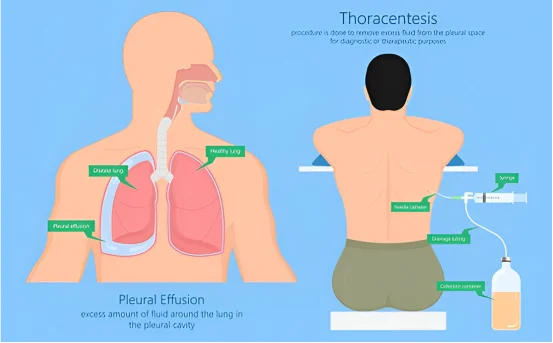Pneumonectomy sounds like a mouthful, but it simply refers to the surgical removal of an entire lung. It’s no quick outpatient procedure; doctors make the call after carefully weighing all other options. Though we mostly hear about it in the context of lung cancer when one lung is too damaged by a tumor to stay in place, there are other cases that may lead to this dramatic step, including various causes for pneumonectomy surgery.
Doctors might recommend pneumonectomy when a serious lung infection, like a long-lasting abscess or tuberculosis that won’t get better with antibiotics, leaves behind more scar tissue than healthy tissue. Traumatic injuries from car accidents or severe burns that destroy large sections of lung tissue can also make removal the safest choice. Finally, some people are born with structural lung problems so severe that they never fully expand or function, and taking out the poorly working lung allows the remaining one to handle breathing duties more easily.
Whatever the cause, patients don’t usually arrive at the idea of losing a lung without exhausting other treatments first. Still, when all alternatives fail, pneumonectomy can save lives and help people breathe better than they would with a badly damaged organ still in place.
The causes for pneumonectomy surgery can vary widely, necessitating a thorough evaluation by medical professionals and careful consideration of all other treatment options.
Why Do Doctors Take Out an Entire Lung?
Understanding the Causes for Pneumonectomy Surgery
When a person has such serious damage to one lung that a smaller operation, like taking out just a lobe, won’t fix the problem, a doctor may suggest a pneumonectomy. The goal of the surgery is pretty straightforward: get rid of the broken lung tissue so the rest of the body can heal, or so the remaining lung can work without the added stress of putting up with the sick side.
There are several reasons someone might end up needing this major surgery.
Common Reasons For a Pneumonectomy
Lung Cancer
Lung cancer tops the list. If a tumor is big, sits in the middle of the lung, or has spread in a way that makes a lobe removal pointless, taking out the entire lung can actually give the patient a shot at a cure. It tends to be the choice when the cancer has infected both lobes of one lung or when it wraps around important nearby blood vessels and airways.
Types of lung cancer that can lead to a full lung removal:
Non-small cell lung cancer (NSCLC) is by far the most common kind that doctors see first.
Within that family of tumors, three particular types stand out:
- Squamous cell carcinoma, which usually starts in the breathing tubes near the center of the chest.
- Adenocarcinoma, the kind that of-ten grows in the outer parts of the lungs and is increasingly seen in non-smokers.
- Large cell carcinoma, a more aggressive form that can show up in different areas of the lung.
When a tumor is too big for a lobectomy or segmentectomy—the procedures that cut out just one lobe or a slice of lung—early-stage cancer doctors will still opt for pneumonectomy. Removing the whole lung can make a real difference in how long a person survives, and it is often followed by chemo or radiation to catch any stray cells. Related terms include lung cancer surgery, thoracic oncology surgery, and tumor removal.
Severe lung infections
Infections that refuse to leave, especially tuberculosis or large abscesses, can ruin a lung so badly that it can’t be saved with meds alone. Even after months of pills, these diseases may tap out the lung tissue, opening cavities in the organ, causing bleeding, or triggering repeat bouts of pneumonia. When doctors meet a patient with multi-drug-resistant TB or chronic pus-filled pockets, they start talking about pneumonectomy to stop the infection from spreading throughout the body. Signs that point to this option include coughing up blood (hemoptysis), massive dark cavities on a scan, and infections that just won’t quit despite every antibiotic on the shelf. Related terms are TB lung surgery, tuberculosis pneumonectomy, and chronic lung infection treatment.
Traumatic lung injury
A serious car crash, a stab wound, or a bullet can shred lung tissue beyond repair. If the injured lung collapses, bleeds like crazy, or shows permanent scars, the only way to save the person may be to take it out completely.
Although you don’t hear about it every day, there are times when a doctor has to remove a lung to save a person’s life. After a bad accident, for example, the lung may be so badly damaged that leaving it in place only keeps the bleeding going. Taking it out can stop the leaks, keep infection from spreading, and give the other lung more room to keep doing its job.
People are sometimes born with problems in their lungs that don’t show up until much later. These birth defects can mean crooked airways, strange blood vessels, or parts of the lung that just sit there and do nothing. When one lung quits working altogether, or when it starts to cause regular infections, doctors might decide it’s safer to remove that lung.
Common congenital conditions requiring pneumonectomy:
- Pulmonary sequestration
- Congenital lobar emphysema
- Bronchogenic cysts
Chronic lung problems, such as bronchiectasis or really severe pneumonia, can keep the tissues inflamed and jammed with mucus. Once that swelling goes on for years, it can ruin the lung’s ability to pull in oxygen and stick around for another flare-up. If pills, breathing treatments, and even partial surgery lose their punch, removing the whole lung is sometimes the only option left to dodge life-threatening issues like sepsis.
Fungal Infections (Aspergillosis)
In patients with weakened immune systems or people who already have serious lung problems, a stubborn fungus called Aspergillus can grab hold of lung tissue and start doing damage. When medicine fails to beat it back and the infection keeps moving, doctors sometimes have no choice but to recommend taking out the whole lung. This is especially the case when what looks like a big “fungus ball”—medically called an aspergilloma—grows inside a lung cavity too large to fix any other way.
Risks & Recovery After Pneumonectomy
Losing an entire lung is obviously a big deal, yet countless patients go on to live completely normal lives with just one. Still, pneumonectomy isn’t without danger. Possible problems include:
- Shortness of breath
- Infection in the chest
- Strain on the heart
A rare condition called post-pneumonectomy syndrome, where the remaining lung expands too much
Most people spend about one to two weeks in the hospital and then enter a rehab program to help their lungs get stronger again. Doctors use breathing tests and X-rays to keep an eye on how things are going. In the long run, how well a person does depends on why the lung came out, their overall steadiness before surgery, and how closely they follow doctors’ post-op instructions.
Conclusion
Pneumonectomy is one of those operations that can really change someone’s life and, in many cases, save it. When serious illnesses like advanced lung cancer, severe tuberculosis, or long-term lung damage get to their worst stages, the only way to stop things from getting worse, help a person breathe easier, or even keep them alive is to take out part or all of a lung. Sure, the surgery carries big risks, but thanks to new techniques and way better after-care, more patients are walking away healthier than ever.
If you or someone close to you is being told they might need this operation, learning about what causes the problem, what the surgery looks like, and what to expect afterward is an important first step. Always sit down with a thoracic surgeon or a lung specialist to figure out if pulling out the lung really is the best move for that person’s health.























